Plant lovers may find winter difficult, but indoor gardening can bring nature inside, brighten living areas, and purify the air. It can also help people feel less stressed.
This article presents 18 low-light, cold-weather-loving indoor plants that are both aesthetically pleasing and useful for novice and seasoned gardeners.
Low-Maintenance Indoor Plants
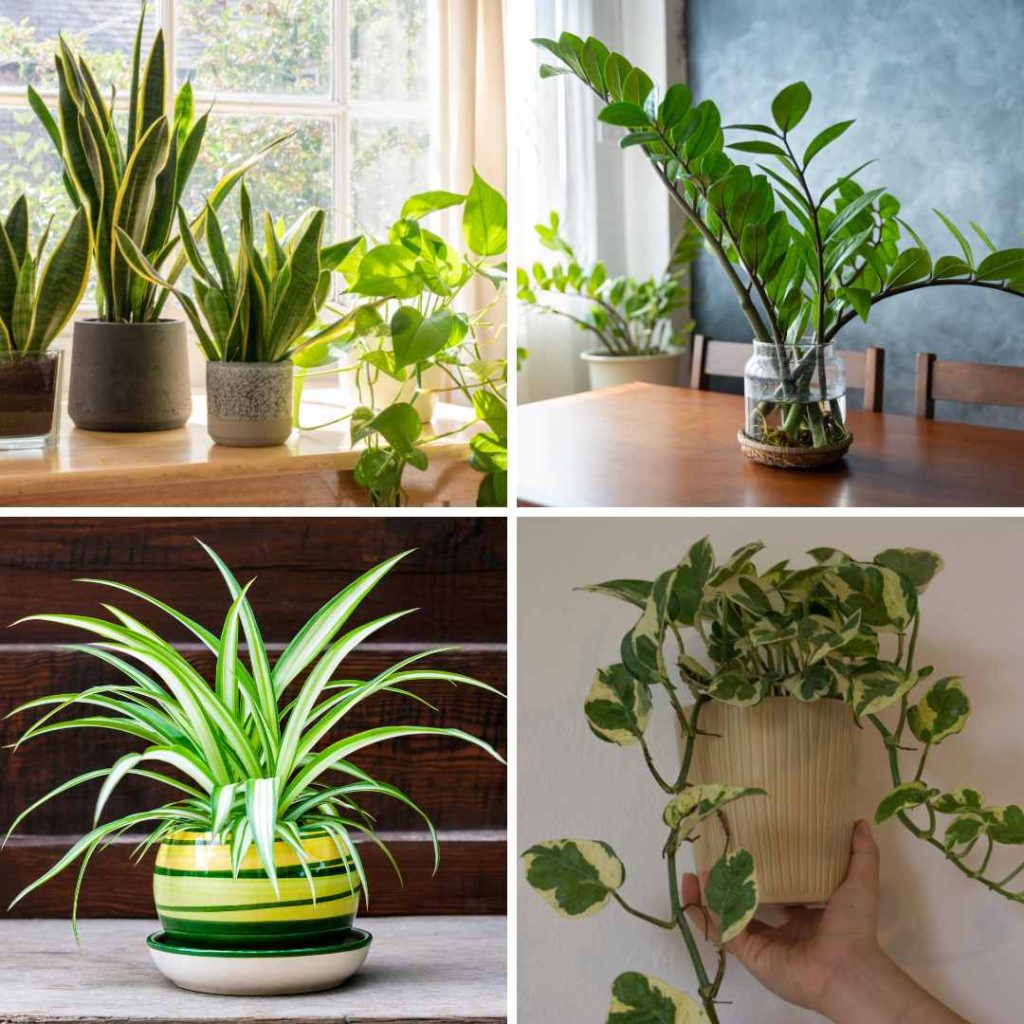
Snake Plant
The Snake Plant, also called Mother-in-Law’s Tongue or Sansevieria, requires little watering; it prefers to be left in partial shade; its temperature can be adjusted to suit various indoor conditions; and it should be allowed to dry out completely between watering.
In addition, the plant has the ability to purify the air by assisting in the removal of airborne pollutants like benzene and formaldehyde. This makes it the perfect option for wintertime indoor gardening.
ZZ Plant
Zamioculcas zamiifolia, popularly known as the ZZ Plant, is a drought-tolerant plant that enhances indoor spaces with its glossy, dark green leaves. It prefers bright, indirect light and can survive in low light, requiring only infrequent watering.
It is a flexible option for winter care because it adjusts well to different indoor temperatures. The ZZ Plant can also be used as an air purifier, clearing indoor air of pollutants like benzene, toluene, and xylene.
Spider Plant
Regular watering, maintaining average indoor temperatures, ensuring moderate light, and keeping the soil moist but not dry are all important care tips for spider plants.
Spider plants are good for both novice and seasoned gardeners because they are excellent air purifiers, eliminating toxins like formaldehyde and carbon monoxide. They do well in winter conditions and flourish in average indoor temperatures.
Pathos
Pathos is a versatile trailing vine with heart-shaped leaves that can be solid green, white, yellow, or pale green. It is also known as Epipremnum aureum, or Devil’s ivy. It works well for shelves, hanging baskets, and climbing plants.
Pathos needs to be watered infrequently, letting the soil dry out in between applications. It likes average indoor temperatures and can adapt to bright to low indirect light levels.
Additionally, it effectively removes toxins like formaldehyde, benzene, and xylene from the air, improving the quality of the air indoors.
Flowering Indoor Plants
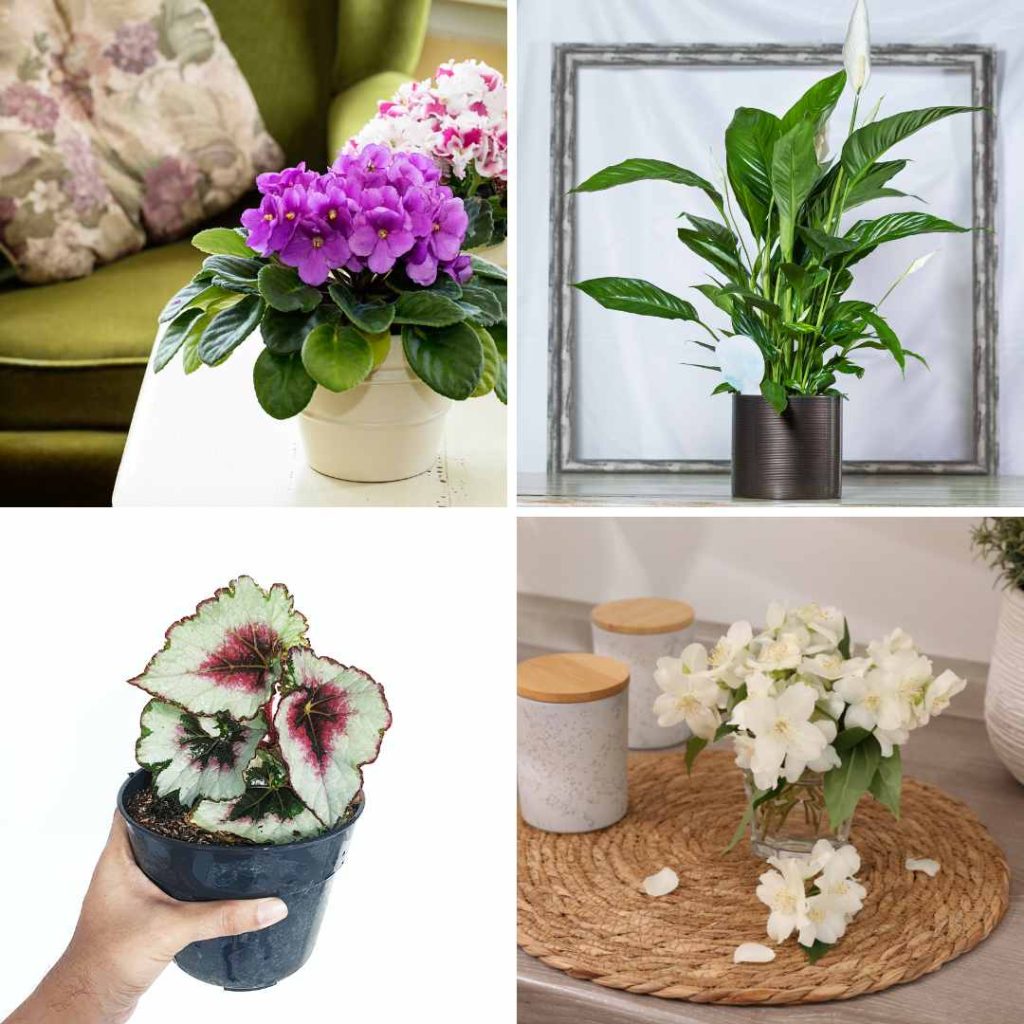
African violet
Regular watering to maintain moisture, avoiding watering leaves to prevent spotting, and watering from the bottom to keep foliage dry are some care tips for African violets, also known as Saintpaulias.
The plant likes warm interior temperatures and thrives in bright indirect light. Because it is sensitive to changes in its surroundings, it should be kept in a stable location and given consistent care to preserve its delicate nature.
Peace Lily
Spathiphyllum, commonly known as the Peace Lily, is a graceful indoor plant with glossy, dark green leaves and calla lily-like white flowers. It’s a well-liked option for giving interior areas more sophistication.
Keep the soil damp but not soggy to take care of it. It can withstand fluorescent lighting and prefers low to medium light levels. It is well-known for its ability to purify the air and prefers warm indoor temperatures.
Begonia
Brightly colored flowering plants with lovely foliage are begonias. Follow these care instructions to keep their vibrant blooms: water them evenly, don’t overwater, use bright indirect light, keep them in a stable, warm, humid environment in the winter, and deadhead them frequently to promote continuous blooming.
Place them on a tray with water and pebbles to make them more humid, and make sure they are always warm in the winter. Your Begonias will live longer and be healthier if you follow these care instructions.
Jasmine
The fragrant jasmine plant is commonly recognized for its star-shaped white or pale pink blossoms. It can be trained to scale a trellis or waterfall, enhancing indoor areas with beauty and aroma.
Regular watering, proper drainage, and the use of bright light near a south-facing window are some care recommendations.
In the winter, Jasmine loves cooler interior temperatures, especially at night, and she gets the most humidity from frequent misting. Pruning aids in shape maintenance and promotes new growth after blooming.
Herbs to Grow Indoors
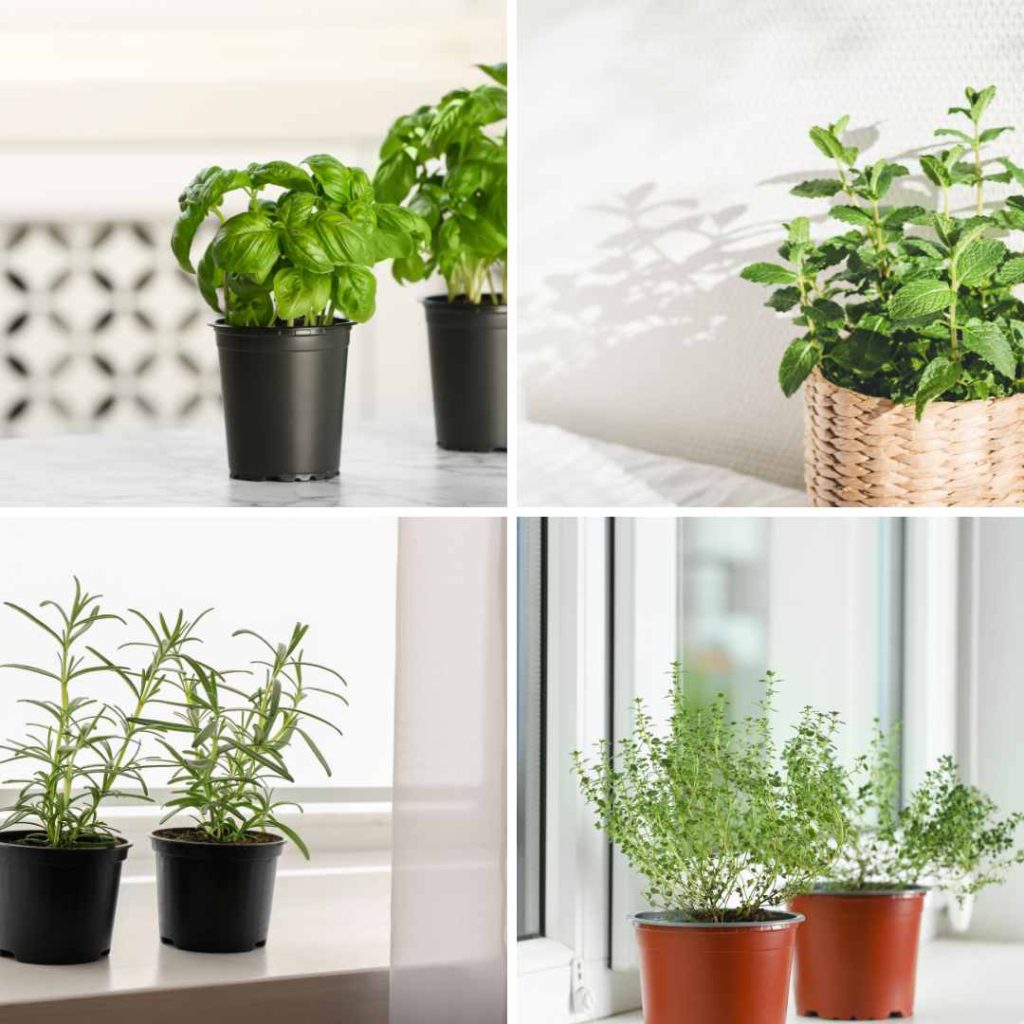
Basil
Popular culinary herb basil is essential for indoor gardens, particularly in the winter. Its flavor is aromatic and slightly sweet, and its vivid green leaves make it a popular addition to salads and pasta dishes.
Basil grows best in 6–8 hours of bright light per day and in warm, comfortable indoor temperatures between 65 and 85°F (18 and 29°C). Regularly pinch off the top leaves to promote bushier growth; otherwise, the leaves may become bitter.
Mint
Maintaining good drainage, adequate light, and soil that is damp but not soggy are some care recommendations for mint (Menthe). While it can withstand less light, mint prefers partial sunlight.
Although it prefers colder temperatures for winter growth, it can survive in average indoor temperatures. To encourage bushier growth and prevent leggings, regular pruning is necessary. To keep the plant from growing too tall and spindly, pinch back the stems.
Rosemary
A popular herb for seasoning meats, soups, and breads, rosemary has needle-like leaves and a potent scent. With the right care, it can be grown indoors during the winter.
Rosemary likes colder interior temperatures, well-drained soil, and six to eight hours of direct sunlight each day. It does best in windows that face south and are bright; keep it away from heating vents.
Since rosemary grows slowly indoors, healthy growth requires patience and occasional rotation.
Thyme
The adaptable herb thyme is perfect for indoor herb gardens, particularly in the winter. It needs to be watered moderately, letting the soil dry out in between applications.
Thyme needs six to eight hours of sunlight per day in order to flourish. It can withstand colder temperatures and prefers average indoor temperatures.
Frequent harvesting or pruning promotes bushier growth and keeps the plant from getting overly woody. Additionally, thyme can be used as a decorative plant to add fresh culinary herbs and greenery.
Air-Purifying Indoor Plants
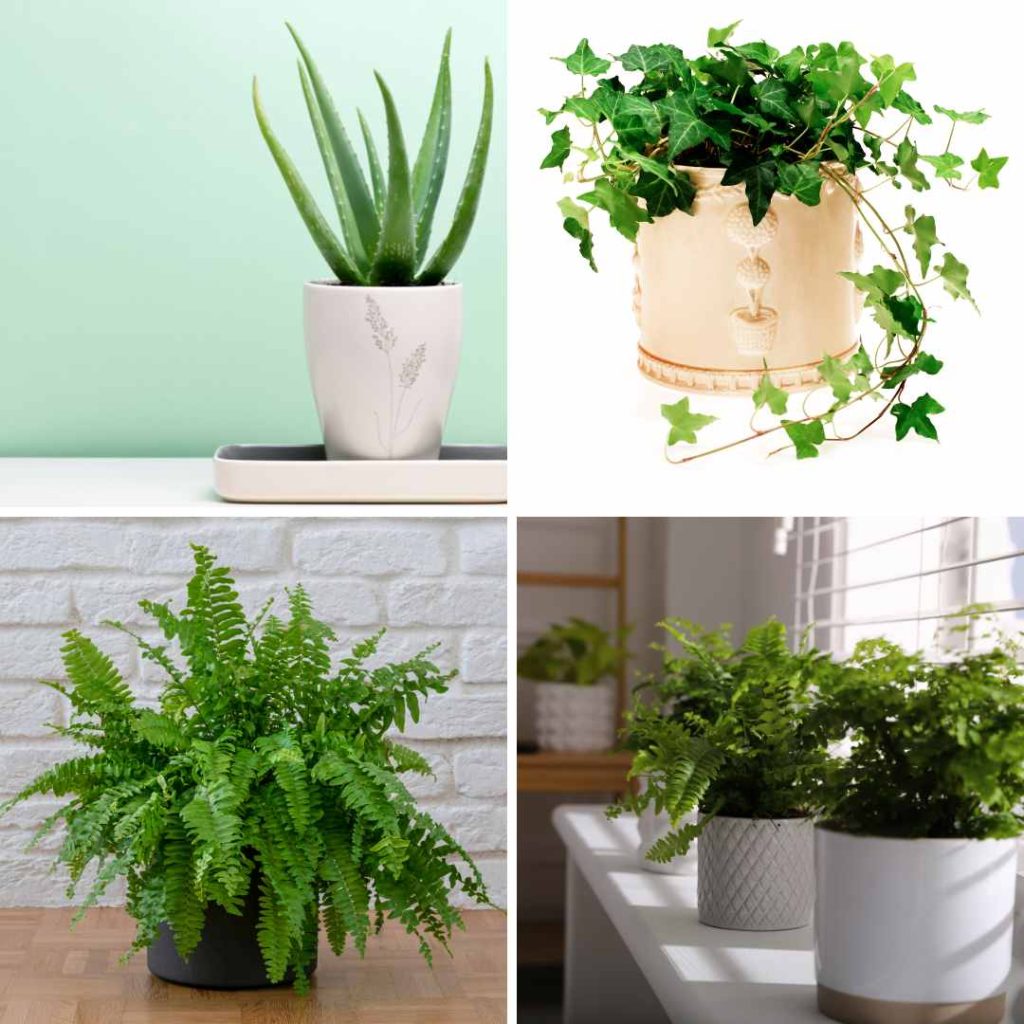
Aloe Vera
Succulent aloe Vera is prized for its therapeutic qualities, especially for its calming gel, which is applied to burns and skin irritations. It can grow in bright light and only needs a small amount of watering, best on a sunny windowsill.
Aloe Vera thrives in temperatures between 60 and 75°F (15 and 24°C), especially in the winter. Refrain from overwatering and make sure the plant has adequate airflow surrounding it to prevent fungal diseases. Aloe Vera gel has many applications, but it needs to be treated with care.
English Ivy
When caring for English ivy (Hedera helix), it’s important to water it frequently to keep the soil moist, but to let the top inch dry out in between applications.
The plant grows best in average indoor temperatures of between 50 and 70°F (10 and 21°C), and it prefers bright, indirect light. Pets and young children should not consume it due to its mild toxicity.
Pruning on a regular basis will help it stay in shape, promote dense growth, and climb on supports.
Boston fern
With its soft fronds and lovely cascade, the feathery Boston fern is a favorite indoor decoration. It should be situated in a filtered or low light area since it needs moist soil and prefers indirect light.
In temperate indoor climates with higher relative humidity, the fern prefers temperatures between 60 and 75°F (15 and 24°C). The fern can be made more humid by using a room humidifier or a humidity tray, and frequent misting will keep it looking lush.
Succulents and Cacti
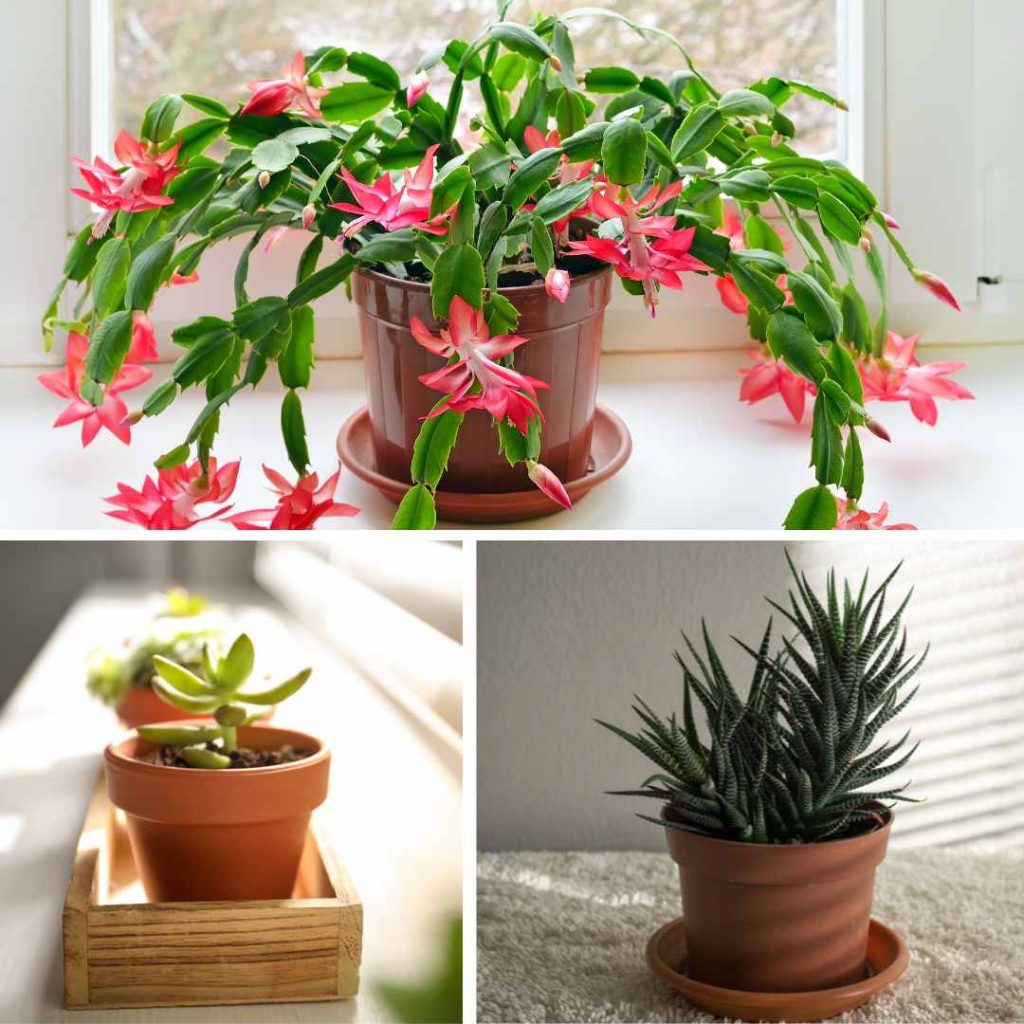
Echeveria
Echeveria is a symmetrical-shaped, multicolored succulent that forms rosettes. These low-maintenance plants are ideal for bringing the outdoors inside. Echeveria needs little watering, and between watering, the soil should be allowed to dry completely.
Bright light is ideal for it, especially in a sunny area. Echeveria does well in winter conditions because it prefers warmer indoor temperatures of 65–80°F (18–27°C). Echeveria requires well-drained soil, minimal watering, and adequate airflow to ward off fungal problems in order to remain healthy.
Haworthia
The low-maintenance succulent Haworthia makes a versatile plant that works well in indoor gardens because of its clusters of thick, fleshy leaves that resemble rosettes. It can survive with moderate light levels and needs little watering.
Haworthia can withstand colder winter temperatures if shielded from frost. It grows best in average interior temperatures of 60–75°F (15–24°C).
It is very drought-tolerant, but overwatering can cause root rot, so to keep it healthy, use a well-draining soil mix. Because it can adapt to a variety of environments, this plant is also good for beginners.
Christmas cactus
The Christmas cactus is a winter-blooming cactus that has vivid pink, red, white, or purple tubular flowers. It likes flat, segmented stems and a humid atmosphere. It requires frequent watering during blooming and does best in bright, indirect light.
The plant likes 60–70°F (15–21°C) cooler interior temperatures; lower nighttime temperatures can encourage blooming. It is advised to mist the plant or place it close to a humidifier to maintain higher humidity levels.
Six weeks prior to flowering season, place the plant in a cool, dark location; after that, bring it back into bright light to promote blooming.
